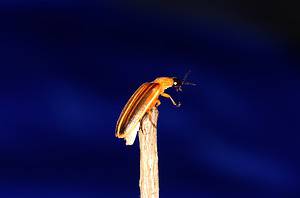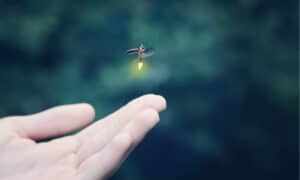Many people who grew up in the south or eastern United States have seen little floating specks of light during the summer. Whether you call them lantern bugs, lightning bugs, or fireflies, these amazing little beetles have a lot of science and history behind them. One of the rarest species of firefly is known as the blue ghost firefly. Today, we are going to learn all about them, plus where and when you can see their dazzling displays! Let’s get started.
What Are Blue Ghost Fireflies?

Blue ghost fireflies are a rare and beautiful species of firefly native to the southern Appalachians.
©ohenze/Shutterstock.com
Blue ghost fireflies are a rare and extremely beautiful type of firefly that can be seen in some parts of North America. Unlike other fireflies that flash on and off, blue ghosts glow steadily for up to a minute at a time. Their blinking is a blue-white light that can shift colors as you get closer, with the most commonly reported being green.
The males fly through the forest and emit a soft glow to find their mates, while the females stay on the ground and are in a larval form until their adulthood. Blue ghost fireflies only appear for a few weeks in late spring or early summer, and they prefer moist and dark habitats. Their scientific name is Phausis reticulata.
Where and When You Can See Them
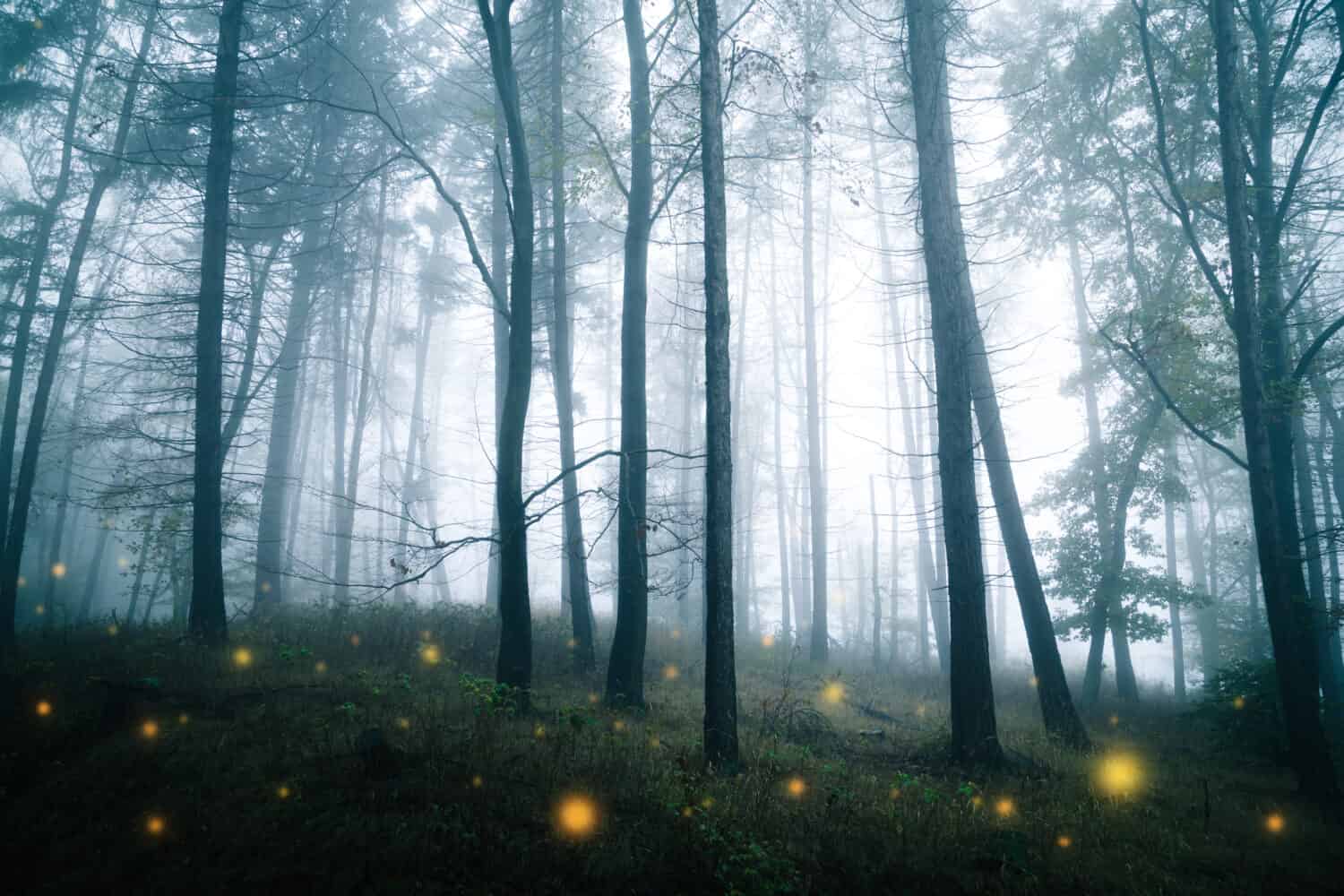
Blue ghost fireflies are rare in the United States, but old-growth and mature forests in the Southeast are the best places to see them.
©ohenze/Shutterstock.com
If you want to see the blue ghost fireflies in their natural habitat, you need to plan ahead and be lucky. These elusive insects only appear for a short period of time, usually from late May to early June, depending on the weather and location. They prefer moist and dark forests near creeks or water sources, where they glow to find mates.
Some of the best places to see them are the Pisgah National Forest, the DuPont State Forest, the Congaree National Park, and the Great Smoky Mountains National Park. Sensing a pattern? They are most commonly found in the southern Appalachians, especially in North Carolina. If you are interested in seeing them, a trip to the southern Appalachians is probably your best bet!
Even still, it can still take a bit of time to find them if you are traveling in the region. To see them, you need to be patient and respectful of their habitat. Some state parks and nature centers offer guided tours or permits to access the areas where they are known to mate.
Here are some tips for seeing blue ghost fireflies:
- Go to a dark, moist forest.
- Look for them in late May or early June.
- The best time to see them is after dark.
- Be patient – they may take a while to show up.
- Don’t use flash photography – it can startle them and make them stop glowing.
- Enjoy the show!
Why Are Blue Ghost Fireflies Blue?
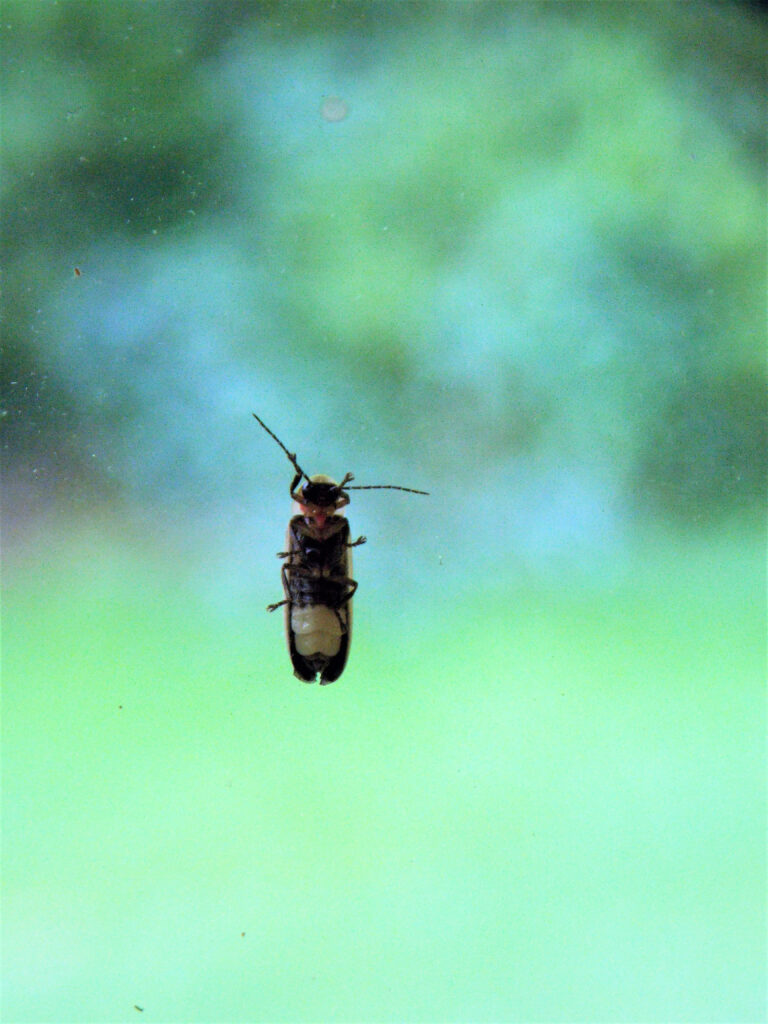
Fireflies emit light through a special enzymatic reaction.
©iStock.com/JJPaden
The blue color of the blue ghost fireflies is not fully understood by scientists. One of the possible explanations is that they produce a different pigment or enzyme than other fireflies, which affects the wavelength of their light. Since the wavelength of light is what gives it color (to human perception, at least), that small change could cause the blue color.
Another possibility is that the human eye perceives their light as blueish-white at night due to the Purkinje effect, which makes dim objects appear bluer than they really are. This would make sense, especially because when they are seen up close, their light can appear bright green.
The Legends Surrounding Blue Ghost Fireflies
Blue ghost fireflies are beautiful on their own, but they also have a lot of history that people have invented to account for their unique color.
Some people believe that these fireflies are the spirits of Confederate soldiers who died in the Civil War and that their blue light is a sign of their sorrow. This legend is pretty prevalent online, although the reasons they shine blue are more likely due to something chemical!
Even outside of the blue fireflies, any species of firefly has a lot of names and folk legends surrounding them. For example, some people call them faerie lanterns and think that they are magical beings that guide travelers through the dark forest. These sorts of legends are extremely common in Appalachia where people have been telling stories for hundreds of years. Altogether, it makes up a beautiful part of the region’s culture!
Regardless of whether it’s a blue enzyme or a sorrowful fallen soldier, these amazing fireflies are beautiful in their own right.
What Do Blue Ghost Fireflies Eat?
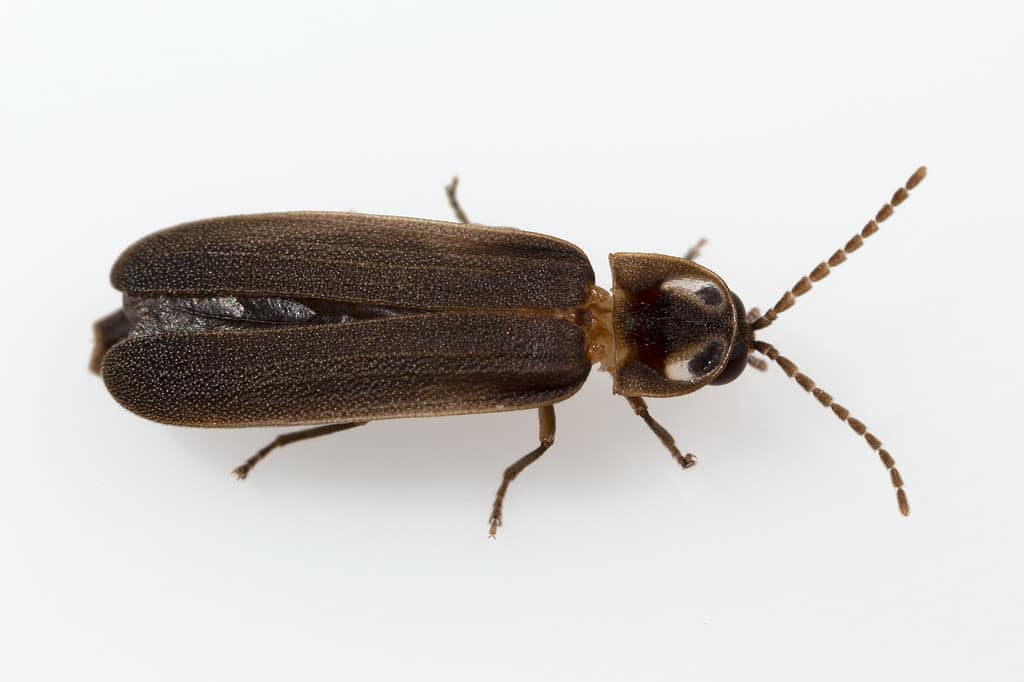
Blue ghost firefly adults do not feed as their primary purpose is to mate and reproduce.
©Aggyrolemnoixytes, CC BY-SA 4.0 – License
Like other species of fireflies, also known as lightning bugs, the larvae of the blue ghost firefly are known as ravenous predators, and while it may not seem possible, they are able to consume prey much larger than themselves. Among their favorite foods are slugs, snails, and worms. Another one of the most essential components of their life is leaf litter, which is where they live during their larval stage.
Also like many other species of fireflies, the blue ghost firefly adults do not feed as their primary purpose is to mate and reproduce, and they do all of their eating in their larval stage. Females of the species are wingless and unable to fly and remain in the larval stage through adulthood, also known as paedomorphic.
The photo featured at the top of this post is © ohenze/Shutterstock.com
Thank you for reading! Have some feedback for us? Contact the AZ Animals editorial team.



